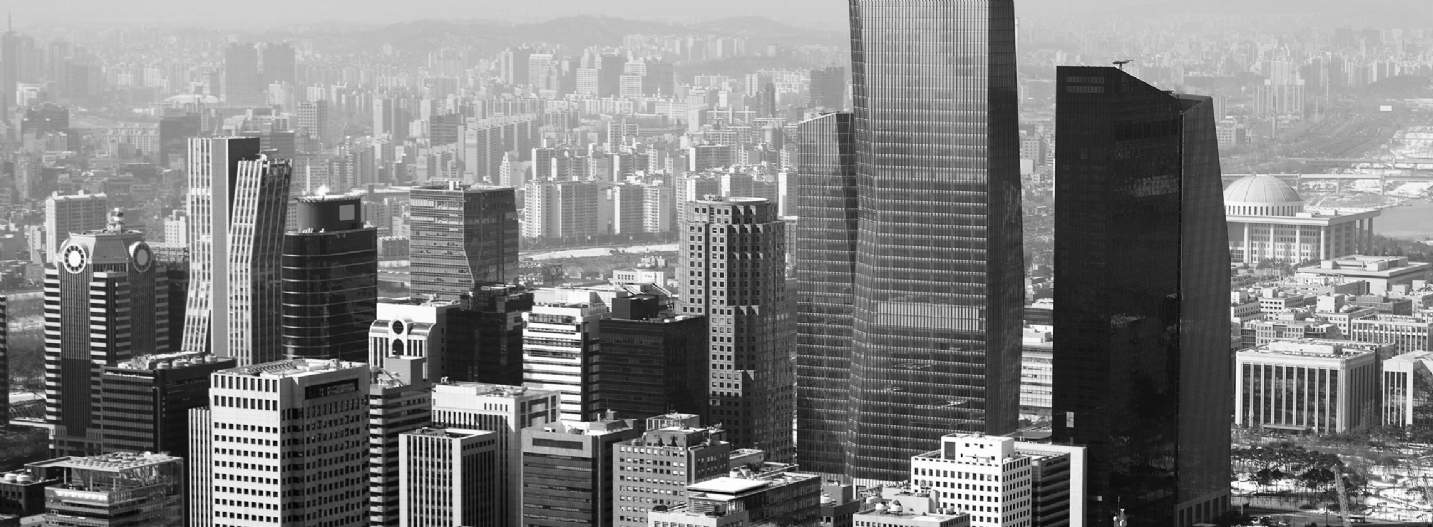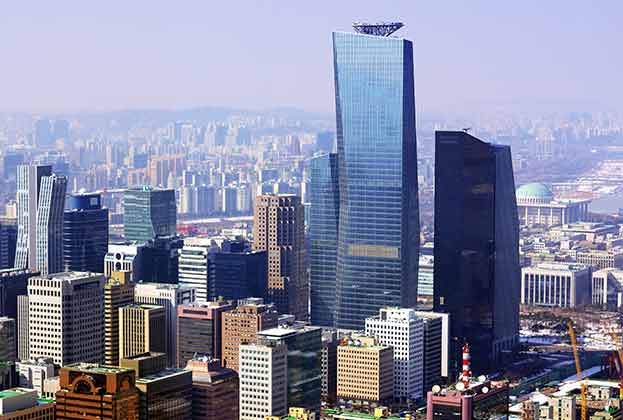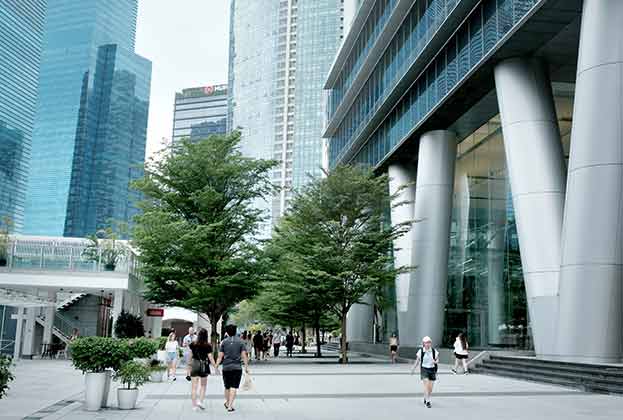Risk premiums of the recent past do not necessarily provide appropriate compensation for the uncertainty of the future
Europe, Middle East, and Africa (EMEA)
The adjustment in European core office pricing is happening at speed. Prime CBD offices in Paris, Frankfurt, and Madrid – yielding below 3% at the beginning of this down cycle – have all seen capital values fall by 25% or more in the last 12 months. These markets are beginning to approach something resembling ‘fair pricing,’ at least when considering average risk premiums of the last five years. This is true also of the City of London, where we now retain a neutral outlook on pricing following an outward yield shift of 100 bps to 4.75% in the last 12 months.
But the message from investors is that risk premiums of the recent past do not necessarily provide appropriate compensation for the uncertainty of the future. In particular, leveraged buyers continue to be squeezed by the high cost of debt – underpinned both by higher swap rates as well as an average rise in margins of 25 bps – and in most markets, there remains little deal activity beyond smaller lot sizes, where private buyers are capitalising on the absence of the major institutions (London and Paris are starting to buck this trend). The German market is particularly quiet, with investment volumes down 80% YoY in Q1, compared with an EMEA average decline of 65%.
The occupational market has been relatively resilient, meanwhile, although not immune to a tech-led slowdown. Take-up across mainland Europe fell by 16% y/y in the first quarter, albeit from a relatively strong base. However, leasing activity is dominated by tenants upgrading to better quality buildings, which begs the question, what happens when occupiers are satisfied with the quality of their office?
On a more positive note, occupancy levels continue to improve, with Paris and Madrid leading the way. And vacancy rates are low enough across core markets to absorb more free space without materially changing the value proposition for investors. In Frankfurt for example, for all the pessimism surrounding the office market, the prevailing vacancy rate is just 8%, well below the peak of nearly 18% in 2011.
While landlords have limited pricing power when looking to sell assets, they do have more discretion on rents
Oliver Salmon, Global Capital Markets, World Research
New deliveries are unlikely to alter this regional narrative, with new speculative space under construction for 2023/24 accounting for an average of just 2.6% of total office stock in Europe. So while landlords have limited pricing power when looking to sell assets, they do have more discretion on rents, which is probably why fewer sales processes are being launched at present.
North America
The US office sector has been making headlines in recent months, singled out in the fallout of the regional banking crisis. Investors are not only facing a higher interest rate environment, but they also have to contend with a much weaker occupational market in comparison with other regions. This is underpinned both by lower occupancy rates and a sharp slowdown in take-up. On the latter, the tech sector is noticeable in its absence, accounting for fewer than 9% of leasing transactions over 20,000 square feet in Q1, down from an average of more than 21% in 2020-21.
Instead, large swathes of sublease space is being returned to the market, driving availability rates ever higher. In LA, where no significant tech sector lease was recorded in the first quarter, available space rose to a record high of 26.2%. So it is no surprise to see the prime yield move out by a further 100 bps this quarter. New York is showing some resilience in comparison, owing to a more diversified occupier base. But here too the availability rate is uncomfortably high and rising at 19.5%, and leasing activity is dominated by renewals as discretionary deals are put to the sword.
Rents meanwhile remain steady, although aggressive competition for occupancy is leading to rising incentives and will eventually put downward pressure on rents. This will exacerbate any price declines driven by further expected yield expansion over the next 12 months.
Against this backdrop, the market is braced for distress. At the end of 2022, less than 0.7% of all commercial real estate loans held by commercial banks were delinquent. But this is likely to rise over the course of 2023; already there have been some high-profile defaults on US office portfolios, and rising CMBS spreads reflect an expectation from investors that more is in the pipeline. MSCI estimate that around a quarter of commercial real estate debt due this year is collateralised by offices. Lenders will be reluctant to extend and pretend given the weak occupational market, especially in an environment where banks are scaling back riskier lending practices.
Asia Pacific
Yields continue to remain broadly resistant to change across the Asia Pacific region. The big exception is in Seoul, where the prime office yield has risen by 105 bps over the last 12 months, implying a near 26% decline in capital values. This is underpinned by pressure from interest rates, with the Bank of Korea raising the policy rate by a cumulative 300 bps over an 18-month period prior to pausing in February. Despite this, while the vacancy rate has risen following the onboarding of new supply, leasing fundamentals remain strong, and rental growth of 8.1% in the first quarter continues to comfortably outstrip inflation, which is now on a steady downward path.
Australia is the other core market facing strong upward pressure from rates, and the prime yield in Sydney has risen by 70 bps over the last 12 months as a consequence. Dynamics in the Australian office market closely mirror its European peers; occupier demand is driving a major wedge between prime and secondary assets, with the premium end of the market seeing robust rental growth. The Reserve Bank of Australia has performed a U-turn in the last few months; after signalling a pause, they subsequently raised rates at their last meeting and signalled more tightening to come. This is likely to put further upward pressure on yields in the next 12 months.
Singapore is somewhat of an outlier. While the Monetary Authority of Singapore has tightened policy, office yields are unmoved from 12 months ago. However price declines are a matter of when and not if; the vacancy rate has now increased in two consecutive quarters, rising by 1.7 percentage points to 7.4% in Q1 amid weaker occupational demand, particularly from tech firms. A tight supply of premium office space should, however, help to put a floor on future price declines.

In Hong Kong and Shanghai, reopening momentum is yet to have a material impact on the market. Supply remains elevated in Shanghai, with the vacancy rate at a multi-year high of 15.9%, and occupational demand remains sub-par, even though we would expect it to improve over the course of the year. In Hong Kong, rents are falling and vacancies rising, and the cost of debt remains an obstacle for investors. Demand will be supported by local end users and Mainland investors, particularly from the Greater Bay area, but we anticipate price declines of 5–10% in 2023.
Finally, in Mumbai, yields have risen marginally due to the rise in Indian government bond rates, although a softening in overall occupier office demand from the tech sector is likely to put upward pressure on yields over the next 12 months.
Read the articles within Taking Stock: Capital Markets Quarterly – Q1 2023 below.





